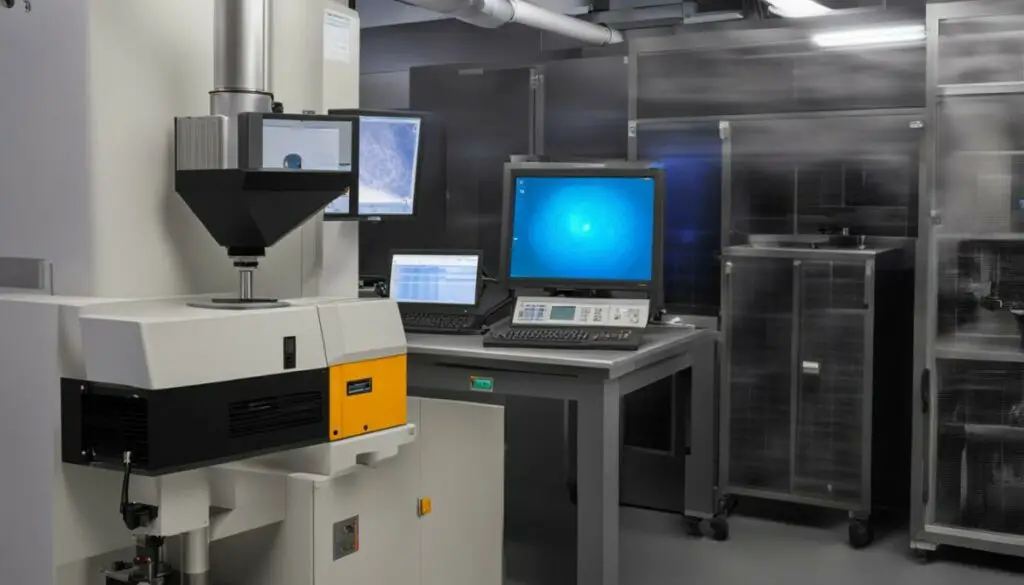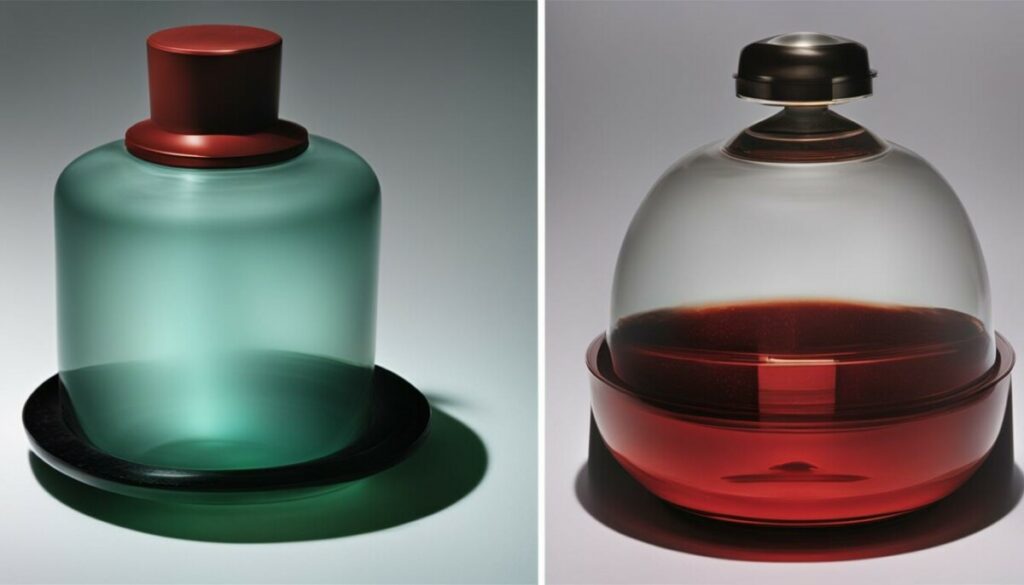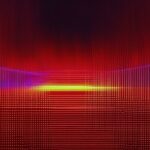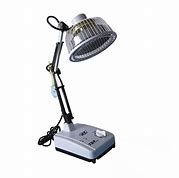Last Updated on 6 months by Francis
Have you ever wondered why some objects emit more heat than others? Or how thermal imaging cameras can detect temperature differences in objects without making physical contact? The answer lies in a type of electromagnetic radiation known as infrared radiation.
In this section, we will explore the concept of infrared radiation and its relevance in determining which objects emit more of it. We will also discuss the sources of infrared radiation and the characteristics of heat-emitting objects.
Contents
Key Takeaways:
- Infrared radiation is a form of electromagnetic radiation that is invisible to the human eye but can be detected by thermal imaging cameras.
- Objects that emit more heat also tend to emit more infrared radiation.
- Common sources of infrared radiation include the sun, fires, and household appliances.
- Understanding infrared radiation is important for applications such as energy efficiency, thermal comfort, and even healthcare.
- Determining which object emits more infrared radiation involves considering various factors such as material, temperature, and surface properties.
Understanding Infrared Radiation

Infrared radiation is a type of electromagnetic radiation with longer wavelengths than those of visible light. It is emitted by an object due to its temperature, and the amount of radiation increases as the temperature of the object rises. Infrared radiation is not visible to the naked eye, but it can be detected using specialized equipment, such as infrared cameras or sensors.
The measurement of infrared radiation is important in various fields, including medicine, climate science, and industrial applications. Devices such as thermal imaging cameras rely on the detection of infrared radiation to generate images.
When measuring infrared radiation, it is important to consider factors such as the distance between the object and the sensor, as well as any intervening materials that may affect the measurement. The characteristics of the object being measured, such as its emissivity and surface properties, can also affect the accuracy of the measurement.
One method of measuring infrared radiation is through the use of a pyrometer, which measures the temperature of an object by detecting the intensity of the infrared radiation emitted. Another common method is through the use of thermal imaging cameras, which can produce images based on differences in infrared radiation emitted by objects. These images can provide valuable information about the temperature distribution of a surface or object.
“Infrared radiation is a type of electromagnetic radiation with longer wavelengths than those of visible light.”
Understanding the nature of infrared radiation and its measurement methods is crucial in determining which objects emit more of it. In the next section, we will discuss the various factors that can affect infrared radiation emission.
Factors Affecting Infrared Radiation Emission

Comparing infrared radiation emission levels requires an understanding of the many factors that can affect the amount of radiation emitted by an object. From material composition to surface properties, these variables can significantly impact infrared radiation emission. In this section, we will explore some of the key factors to consider when determining infrared radiation emission levels.
Material Composition
The type of material an object is made of is one of the most significant factors determining its infrared radiation emission levels. Certain materials, such as metals, have a higher emissivity, meaning they emit more infrared radiation. For example, copper has an emissivity of 0.78, while stainless steel has an emissivity of 0.27. This difference in emissivity can significantly impact the amount of radiation emitted by these materials.
Surface Properties
The surface properties of an object can also impact its infrared radiation emission levels. Rough surfaces tend to emit more infrared radiation than smooth surfaces. This is because rough surfaces have a larger surface area, allowing for more absorption and emission of radiation. Additionally, the color of an object can also affect its infrared radiation emission levels. Darker objects absorb more radiation than lighter objects, leading to a higher level of emission.
Temperature
The temperature of an object can also affect its infrared radiation emission levels. Objects at higher temperatures emit more infrared radiation than those at lower temperatures. This is because heat energy is related to the frequency and intensity of radiation emitted. For example, a hot frying pan will emit more infrared radiation than a cold frying pan.
Comparing Infrared Radiation Emission
Measuring and comparing infrared radiation emission levels requires special equipment, such as an infrared camera or pyrometer. These tools allow for accurate measurement and comparison of infrared radiation emission levels. By understanding the factors that affect infrared radiation emission levels, one can better compare and analyze the levels emitted by different objects.
Fig. 1: An example of an infrared camera used to measure and compare infrared radiation emission levels.
Objects with High Infrared Emission

When it comes to emitting infrared radiation, not all objects are created equal. While most objects emit some degree of infrared radiation, some are known for their high levels of emission. Here are a few examples of objects with high infrared emission:
| Object | Material |
|---|---|
| Incandescent light bulbs | Tungsten filament |
| Charcoal | Carbon |
| Computer processors | Silicon, germanium, and other semiconductors |
| Human skin | N/A |
It’s important to note that the level of infrared radiation emission can vary depending on the specific material and conditions. However, understanding which objects are known for their high levels of emission can be useful in various contexts.
For example, when designing a heating system, using materials known for their high infrared emission can lead to more efficient heating. Infrared saunas, which use infrared radiation to heat the body directly rather than heating the air, often use materials known for their high infrared emission to maximize their therapeutic benefits.
Common Sources of Infrared Radiation

From the sun to household appliances, there are various sources of infrared radiation that we encounter daily. Understanding these sources can help us appreciate the role of infrared radiation in our lives.
The following are common sources of infrared radiation:
| Source | Description |
|---|---|
| The Sun | The sun is the primary source of infrared radiation. It emits a wide range of electromagnetic radiation, including infrared radiation, which is responsible for warming the earth’s surface. |
| Household Appliances | Common household appliances such as ovens, toasters, and electric heaters emit infrared radiation as a byproduct of their operation. Infrared radiation is also used in some remote controls to transmit signals to devices. |
| Industrial Processes | The use of infrared radiation is widespread in many industrial process such as heating, drying, and curing. Infrared lamps, ovens, and heaters are commonly employed for these purposes. |
| Fire | Fire emits both visible light and infrared radiation. The heat we feel when standing near a fire is mainly due to infrared radiation. |
| Animals | Animals, particularly warm-blooded ones, emit infrared radiation. This radiation can be detected using thermal imaging cameras, making it useful for wildlife monitoring and research. |
As you can see, infrared radiation is all around us, and understanding its sources can help us better appreciate its importance in our lives.
Heat Production and Infrared Radiation

Heat production and infrared radiation are intimately connected. Whenever an object generates heat, it also emits infrared radiation. This is why heat-emitting objects, such as machinery and electronic devices, are often sources of significant amounts of infrared radiation. Infrared radiation is produced due to the phenomenon of thermal radiation, which is the emission of electromagnetic waves caused by the movement of charged particles within an object.
Heat production and infrared radiation emission have significant implications in various settings. For example, in industrial applications, the generation of heat and infrared radiation may be beneficial or harmful depending on the situation. Infrared emitters are commonly used to dry coatings or cure industrial materials, for instance, but excessive infrared radiation exposure may lead to product defects or cause harm to workers.
The generation of heat and infrared radiation may have significant implications in various settings, from industrial applications to everyday use.
Heat-emitting objects also play a role in thermal comfort, as they contribute to the overall temperature of a given space. Infrared heaters, for instance, are often used as a source of radiant heat, which is absorbed by surfaces and objects in the room, creating a more comfortable and efficient heating effect. On the other hand, electronic devices that generate excessive amounts of infrared radiation may contribute to uncomfortable heat levels in a room or create hotspots that affect thermal comfort.
Understanding the connection between heat production and infrared radiation emission is crucial for making informed decisions in various contexts. Whether it’s improving energy efficiency or ensuring thermal comfort, being aware of the factors that contribute to infrared radiation emission can help us create safer, healthier, and more comfortable environments.
Infrared Radiation Comparison: Techniques and Tools for Accurate Measurement

Measuring and comparing the levels of infrared radiation emitted by different objects requires specific techniques and tools to ensure accuracy and reliability. Here are the most common methods:
- Thermography: This technique uses thermal imaging cameras to create images that visualize differences in temperature. These images can highlight areas of high or low infrared radiation emission, making it easier to identify any anomalies. Thermography is often used in industrial, medical, and scientific applications for non-contact temperature measurement.
- Pyrometry: Pyrometers are devices that measure the temperature of a surface by detecting its emitted radiation. They are often used in high-temperature industrial settings, such as steel mills or glass production, where traditional contact thermometers are not feasible. Pyrometry can provide accurate temperature readings but does not directly measure infrared radiation emission.
- Spectroscopy: Spectroscopy is a technique used to analyze the electromagnetic spectrum of materials to determine their chemical composition or physical properties. Infrared spectroscopy can provide precise measurements of infrared radiation emission by analyzing the frequency of the emitted radiation.
By using these methods, we can accurately compare the levels of infrared radiation emitted by different objects and materials. These techniques are crucial in various fields, from manufacturing to environmental testing.
Example of Infrared Radiation Comparison
Let’s take a look at an example of comparing the infrared radiation emission of two common materials: aluminum and steel.
As we can see from the table, aluminum has a significantly higher level of infrared radiation emission than steel. This discrepancy is due to the difference in their thermal conductivities and surface properties. By understanding the factors that affect infrared radiation emission, we can make informed decisions in various settings, from building construction to electronic design.
Practical Examples of Infrared Radiation Emission

Comparing infrared radiation emission is essential in various real-life situations where understanding the nature of emitted radiation can bring about important implications.
One of the most common practical applications of infrared radiation emission comparison is in the manufacturing sector. By utilizing infrared radiation cameras, factories can identify inconsistencies in temperature among different components of a given system, allowing them to take necessary corrective measures.
Infrared radiation cameras are also used in the healthcare industry for the early detection of illnesses. The cameras can detect abnormal temperature patterns on a patient’s skin, indicating the presence of certain diseases or conditions.
Another practical example of infrared radiation emission comparison is in the realm of energy conservation. Homes and buildings can benefit from infrared radiation inspections to identify areas where heat is escaping, enabling owners to make necessary repairs and reduce energy consumption.
Moreover, some athletic and wellness centers have started to offer infrared saunas that emit therapeutic levels of infrared radiation. Infrared saunas are believed to offer a range of benefits, from stress reduction to pain relief.
Comparing infrared radiation emission can lead to a deeper understanding of the implications of heat production and other factors in different settings, from healthcare to energy conservation.
Implications of Varying Infrared Radiation Emission
Determining infrared radiation emission levels can have significant implications in various aspects of our lives. For instance, in industrial settings, understanding and regulating infrared radiation emission can help improve energy efficiency and reduce heating costs.
In residential settings, knowledge of infrared radiation emission levels of household appliances can help in making informed decisions to reduce electricity bills and promote sustainability. For example, choosing appliances that emit less infrared radiation can help reduce energy consumption and, in turn, promote efficient use of resources.
Additionally, the thermal comfort of a space can be influenced by the levels of infrared radiation emission. Spaces with high levels of infrared radiation emission can result in discomfort and even health issues for the occupants. Therefore, measuring and regulating infrared radiation emission levels can help maintain a healthy and comfortable environment.
Moreover, varying levels of infrared radiation emission can have implications in the field of medicine. For example, infrared radiation is used in infrared saunas to promote relaxation and detoxification. Understanding the appropriate levels of infrared radiation emission can help promote the benefits of infrared saunas while mitigating any harmful effects.
In conclusion, determining the levels of infrared radiation emission is important in various aspects of our lives, from promoting energy efficiency to maintaining healthy and comfortable environments. By understanding the implications of varying levels of infrared radiation emission, we can make informed decisions and promote sustainable and healthy living.
Conclusion
After exploring the concept of infrared radiation and its relevance in determining which objects emit more of it, we have gained a better understanding of the factors that affect infrared radiation emission.
We have seen that different materials, temperatures, and surface properties can influence the amount of infrared radiation emitted by an object. We have also identified specific objects or materials known for their high infrared emission.
Furthermore, we have discussed the common sources of infrared radiation in our daily lives and the connection between heat production and infrared radiation.
Practical Applications
Having learned about the techniques and tools used to measure and compare the levels of infrared radiation emitted by different objects, we can apply this knowledge to real-life situations.
For example, in industrial settings, understanding infrared radiation emission can help enhance energy efficiency, while in infrared saunas, it can contribute to improved thermal comfort.
Implications
Moreover, we have discussed the implications of varying levels of infrared radiation emission. We have examined how it can affect energy efficiency, thermal comfort, and even health considerations.
By gaining insights into infrared radiation emission, we can make informed decisions and take appropriate action to ensure our well-being and the optimal performance of various systems.
Final Thoughts
In conclusion, understanding which objects emit more infrared radiation involves exploring the nature of infrared radiation emission, considering factors that affect it, and exploring practical examples. It is an essential aspect of our daily lives and can have significant implications for a range of applications.
FAQ
What is infrared radiation?
Infrared radiation is a type of electromagnetic radiation that is invisible to the human eye. It consists of longer wavelengths than visible light and is commonly associated with heat.
Which objects emit more infrared radiation?
Objects that are hotter tend to emit more infrared radiation. Materials with high thermal conductivity, such as metals, are also known to emit infrared radiation more prominently.
What are the common sources of infrared radiation?
The sun is a major source of infrared radiation, providing both visible light and heat. Other common sources include household appliances like stoves, ovens, and heaters.
How is infrared radiation measured?
Infrared radiation can be measured using specialized devices called infrared thermometers or thermal imaging cameras. These tools detect and quantify the amount of infrared radiation emitted by an object or surface.
What are the implications of varying levels of infrared radiation emission?
Varying levels of infrared radiation emission can impact energy efficiency, thermal comfort, and even health considerations. Understanding these implications can help in making informed decisions regarding insulation, temperature control, and personal protection.









